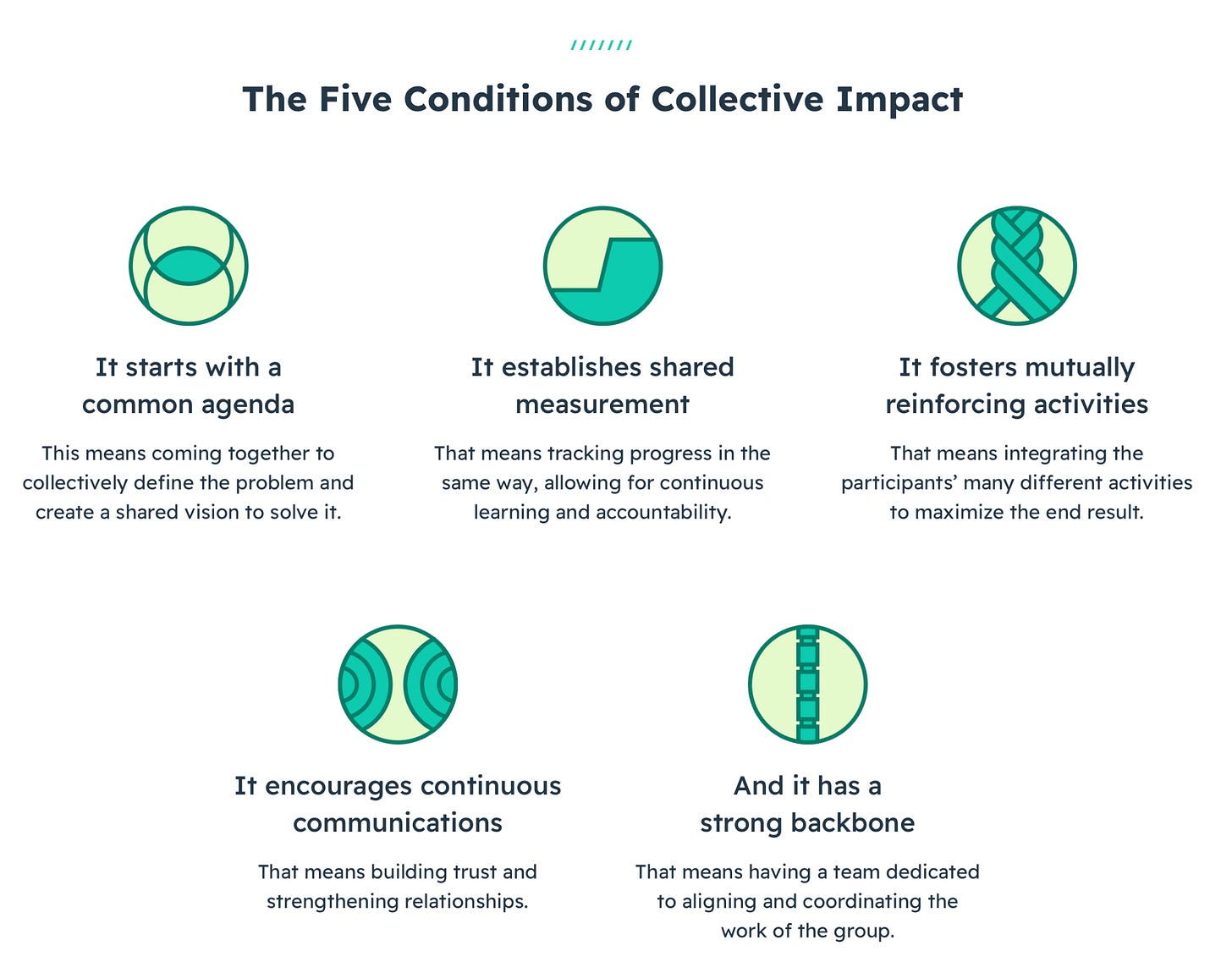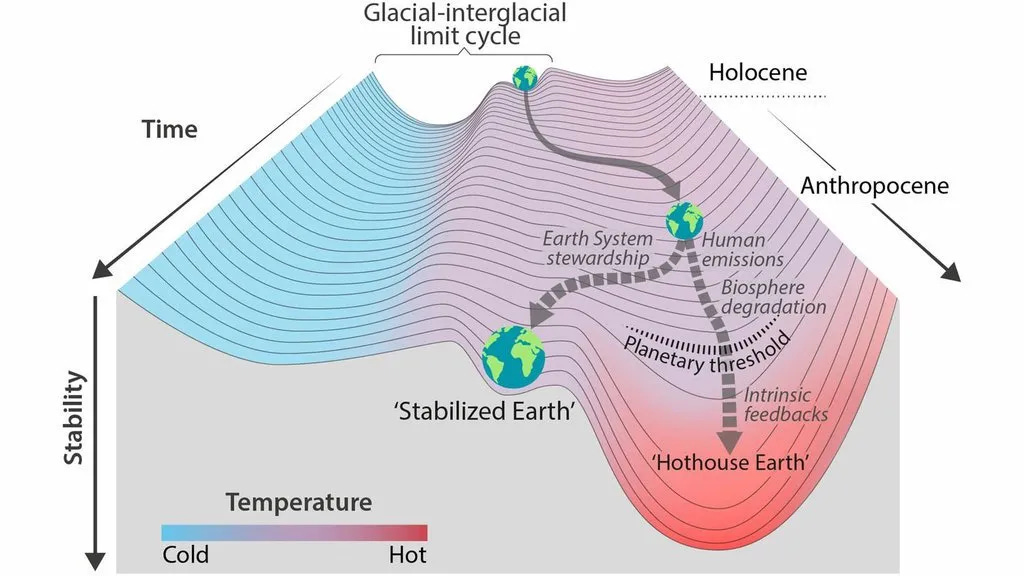The Architecture for Cooling Earth Is Finally Taking Shape
By my estimate, fewer than a thousand people globally are working on cooling interventions. I spent four days at New York Climate Week watching a subset of them get organized, and the scale mismatch kept hitting me. The shopping mall near my home in Seattle employs more people than the entire global workforce figuring out how to stabilize Earth’s temperature.
That gap between what needs doing and who’s doing it is overwhelming. It makes me feel small and scared and excited all at once. Seven months into exploring cooling interventions, I wasn’t at Climate Week looking for proof they’re necessary. My timeline collapse moment—when the math caught up with me—took care of that. I went to see if this impossibly small community was building the coordination infrastructure needed to actually deploy these tools before physics forces our hand.
What I found was both sobering and genuinely encouraging. For the first time, this tiny community is building the architecture to work as a coordinated force rather than scattered efforts. And we’re going to need every bit of that coordination.
The State of the Field
Since June, I’ve been taking calls with the leaders of organizations working on cooling interventions, asking each the same question: “This isn’t a commercial space, so what can an entrepreneur like me contribute?”
The answers painted a clear picture. There are groups working on every aspect of this—governance frameworks, research and modeling, communications and data compilation, funding and oversight of outdoor experiments. There are people at think tanks working on policy, others approaching this from risk assessment perspectives, and teams focused on equity and justice considerations. But what we don’t have is the social and political architecture to move from research to readiness.
Climate Week let me see this ecosystem and meet all these people in person for the first time. Monday through Wednesday brought a traveling circuit of evening gatherings. Reflective and Degrees Initiative on Monday. Environmental Defense Fund on Tuesday. The Alliance for Just Deliberation on Solar Geoengineering on Wednesday.
That EDF now hosts SRM discussions should tell you everything about how the conversation has shifted of late. I doubt they would have touched this topic in the past. Now they’re convening discussions about stratospheric aerosol injection alongside their traditional climate work.
But the scale mismatch remains staggering. These gatherings fit in medium-sized conference rooms that hold thirty to fifty people, with mostly the same faces I’d been seeing on video calls since June.
Each organization has carved out its niche. Degrees builds research capacity in the Global South. DSG develops governance frameworks. Reflective facilitates research into SAI. Everyone’s picking up their piece of the puzzle and doing good work. But formal coordination infrastructure that could align these efforts more systematically hasn’t existed.
Thursday’s workshop promised something different.
The Backbone Emerges
I’d read about the Climate Emergencies Forum before New York. Renaissance Philanthropy’s ARC initiative is building CEF not as another research institute or advocacy group, but as what organizational theorists call a “backbone”—infrastructure that enables collective impact across disparate efforts.
Joshua Elliott from Renaissance opened the workshop with a presentation that made the stakes explicit. Current policies lead to 3°C or higher. The Hothouse Earth pathway shows cascading tipping points that become self-reinforcing once triggered. Permafrost releasing methane that accelerates warming that releases more methane. Forests flipping from carbon sinks to carbon sources. Ice sheets passing points of no return.
His key slide was four words: “We are not ready.”
The diagnosis was precise:
There is no plan for compounding risks
Our institutions are fragmented, with no coordination happening across housing, health, infrastructure and so on
The invisible frontline: those most at risk are absent from decision-making
Early warnings rarely lead to early and effective real-world action
Looking around the room that contained about fifty people, I felt the weight of what we were discussing. These folks understand, in granular detail, risks that most of humanity hasn’t begun to grasp. They represent nearly the entire leadership of a field that needs to be thousands of times larger.
The people in that room shared a common understanding: the climate crisis is accelerating, and whatever work we’re each doing—research, governance, communications, capacity building—needs to happen faster. They were there to build the connective tissue that could help everyone move more quickly and effectively.
Building Coordination Infrastructure
CEF’s approach (whether intentionally or not) follows Collective Impact methodology—something Andrew Himes from the Carbon Leadership Forum had introduced me to. When building a coalitional movement that is meant to move forward on a particular issue, you need a “backbone” organization that doesn’t try to do everything itself but creates the structure for everyone else to coordinate effectively.

To that end, Joshua presented five principles for alignment among the group. He explicitly said we are not trying to get everyone to agree on strategy, but rather focusing on how we can all find common beliefs to stand upon:
The threat of catastrophic climate risk is real and growing
Emissions reduction and adaptation are essential but no longer sufficient
Planning for catastrophic risks and developing mitigation options must be added to the climate response toolbox
Existing institutions are not yet equipped to manage catastrophic climate risks
Coordination starts with shared values, not consensus on specific interventions
The ecosystem map they had built had nearly 100 organizations on it and spanned every relevant field. All of these orgs are playing a larger role in this growing coalition. The research capacity exists. The governance thinking exists. The technical development exists. What’s been missing is the architecture to make these pieces work together. CEF is building that architecture.
The Permission Problem
There were eight different breakout sessions after the plenary, and I facilitated the session on narrative and consensus building. The group quickly identified tactical challenges: current climate messaging starts from scientific facts rather than what people care about, lack of funding for communications research, and a fractured media and attention environment. The main recommendation we produced was to build a messaging research ecosystem to understand what resonates with different audiences and share insights across organizations.
But sitting there, I kept thinking about a deeper problem we weren’t discussing: there’s no cultural permission space for these conversations at all.
Think about the political reality. A (not crazy) politician who mentions solar radiation management will get attacked from both flanks—conspiracy theorists complaining about chemtrails on one side, environmental allies denouncing moral hazard on the other. Open-minded scientists avoid the topic to protect their careers, while others (who should know better) censor the topic and call it anti-science. The result is silence where we need serious discussion.
I don’t believe this is a messaging problem you can focus-group your way out of. It’s a permission problem. We’re asking decision-makers to prepare for interventions they can’t even mention without risking their careers. That gap—between what physics demands and what politics allows—might be the most dangerous gap of all right now.
The Validation and the Work Ahead
Thursday’s workshop didn’t reveal these problems to me. I’ve been mapping them for months. But it validated what I’d been observing and showed me others see it too.
The carbon removal community, where I spent the last decade, took almost fifteen years to achieve mainstream acceptance. Cooling interventions don’t have fifteen years. The physics—and the human suffering that will force our hand—won’t wait that long.
What we need goes beyond research or governance frameworks. We need the social architecture that makes deployment possible before catastrophe makes it mandatory. That means building public understanding, creating political cover for leaders, and establishing the trust infrastructure for democratic societies to make profound decisions about planetary management.
I’ve found where I fit in this puzzle: building that narrative and trust infrastructure. Taking something that feels fringe and dangerous and making it feel as inevitable and obvious as it actually is. This is not the only gap that needs filling, but it is possibly an enabling one. Without cultural permission, technical readiness means nothing.
The Inflection Ahead
2025 feels like it could be the inflection point. Not because the problems got easier—in fact they are accelerating. But because the coordination infrastructure is taking shape. CEF provides the backbone. Major institutions like EDF are engaging. The community remains small but it’s ready to scale.
Everyone in that room is finding their piece of this puzzle. Some will refine the science. Others will design governance systems. Still others will ensure vulnerable voices get heard. The question now is whether we can build public readiness as fast as we’re building technical capacity. Whether fifty people in a room can catalyze the thousands we need. Whether we can create political permission before physics makes the choice for us.
Fewer than a thousand people are working on this. The cascades are accelerating. The window for responsible deployment is constantly narrowing. But for the first time, I see the architecture that could coordinate a response equal to the crisis.
We just need to move faster. Much faster.
The alternative is waiting for catastrophe to force our hand, and that is not a strategy. It’s an abdication of our responsibility to act while we still have choices.






A really cogent analysis, so helpful - thanks for taking the time to write this up
This is a great reflection — thanks for capturing the scale mismatch so clearly. One piece I’d add: while most of the field is still in the research and coordination phase, Make Sunsets is already running real deployments, showing what’s physically possible today. That helps create the “permission space” you highlight as missing.
It reminds me of AI. The first GPT models were dismissed as toys — yet here we are at version 5, transforming entire industries. That leap never would’ve happened if OpenAI hadn’t shown the world what was possible early on. In contrast, SRM research/governance today feels a lot like the academic AI labs that relied on grad students or MTurk to poorly label data and Model UN theatre writing about what-ifs. What we actually need is clean in-situ data — the kind that only comes from real deployments — to feed the models and make better predictions on the impact of SAI.